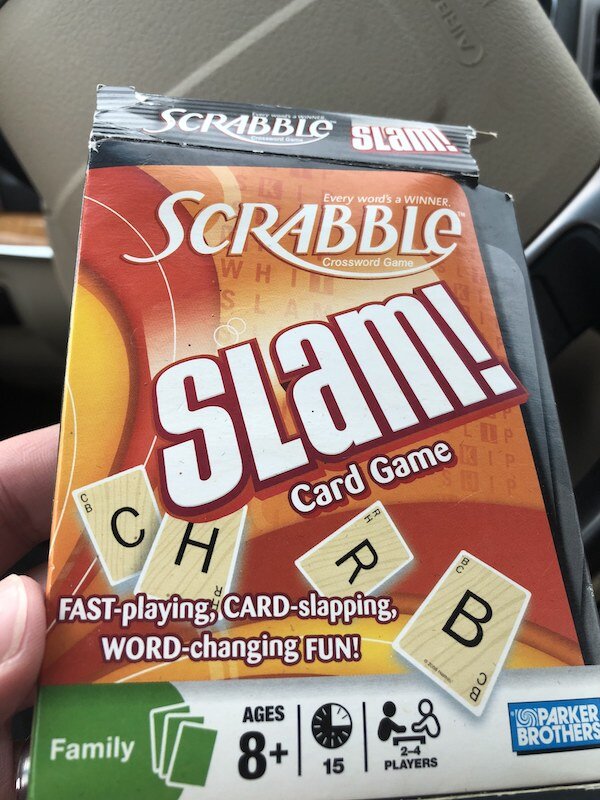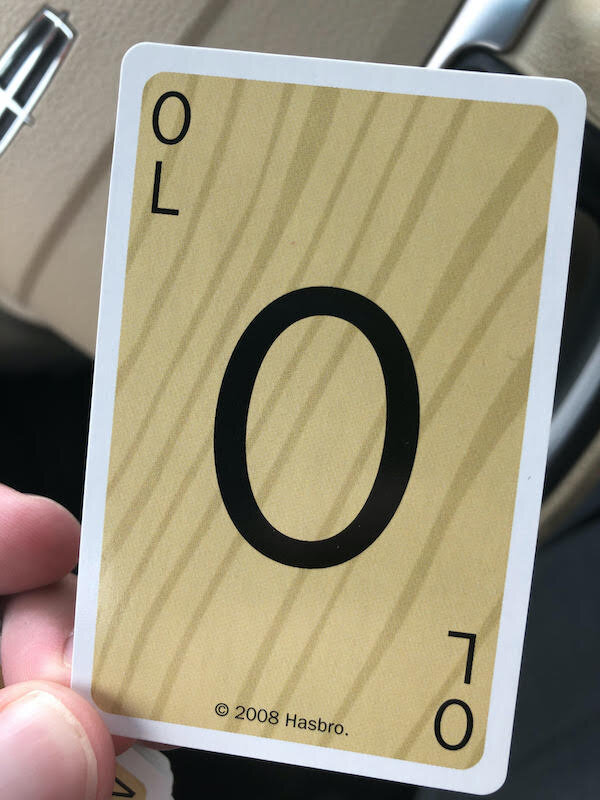The Fatal Attraction Hook
/In the next book, there is a section on ways to get into a performance that are more circumspect than saying, “Do you want to see a trick?” But also more surefire than the time-honored advice of sitting around and waiting for your spectators to bring up the topic of ESP. (Good luck with that.)
What follows is something that was cut from the book. Mainly because it was too long, but also because it became too much of a personal anecdote.
So I thought I would throw it up here instead. Remember the context of the chapter this was pulled from is “techniques for indirectly getting into magic tricks.” You might say, “What’s the point? Why bother with this sort of thing? Just show people the trick.” Well, the point is just that I think it’s fun to mix things up a bit. To take a more circuitous route to a trick. I think it gives a different flavor to a performance, and is therefore a useful sort of thing for the social magician who is frequently performing for the same people again and again. But if it’s not your scene, I get that. There are plenty of things in magic that aren’t for me either.
Here we go…
This one was borne out of a real-life situation that happened to me once where I met this woman, we’ll call her Kelli, at a party one evening. She was super attractive and seemed cool and we were talking on and off throughout the night. At one point, I showed her a simple mind-reading trick which she got a big kick out of. But I could also tell from her reaction that she was really chewing it over in her mind. It wasn’t just a simple “wow” reaction. This moment had captured her mind in a deeper way.
In the days after, we were texting back and forth and things were fine. But it was right about this time I needed to leave town for a couple months for a project I was working on across the country. So whatever might have been developing between us was sort of put on hold.
While I was away, I realized Kelli was a bit of a “high drama” sort of person. Which could not be more opposite than me. It was clear she was trying to get me to come back across the country to visit her even though I barely knew her. I told her that wasn’t going to happen. “Let’s take a step back and see what happens when I return,” I said (not really having any intention of contacting her when I returned). But she didn’t like that idea.
And over the course of the weeks I was away, she brought up the trick I showed here a few times. Whenever I would say something along the lines of, “Look, I barely know you. You need to chill out.” She’d say something like, “At the party, didn’t you feel our connection? What about the trick?” And even though she referred to it as a “trick,” she would suggest that the fact that it worked was indicative of something. And I would explain to her that it really wasn’t. I could have done it for anyone capable of writing a word on a business card. She didn’t really seem to believe me.
I soon realized she was bonkers. She started sending me texts as if she had intended to write them to other people and accidentally sent them to me instead. The first time it happened, I could have believed it was an accident. But she did it a dozen times. And all the texts were her pretending to be texting someone else about me. When she wasn’t doing that, she was trying to seduce me with half-naked pics. And when I wouldn’t bite on those, she’d say things like, “I really cared about you. And this is how you treat me?” Reminder, we had just hung out one time at a party. So it was just super weird stuff.
I will pick up that story in a bit, because it does have an ending worth sharing.
But now for the point of this chapter. While I was in LA at the time, I had this situation happen twice. I would be out to dinner with someone and my phone would be blowing up. I’d look at it. See it was Kelli. Sigh a little. And from my reaction, the person I was with could tell something was off. So I ended up telling the person this story and what was going on, and they both said the same thing: “Oooh… I want to see that trick!” They both wanted to see the trick that had affected this woman so much. I wasn’t intending to use the story as a hook to get their attention, but it ended up being one.
I think people often are really looking for an excuse to ask to see something. And this story was a perfect excuse for them. I realized if I wanted to, I could fake the situation going forward. I could just act like I was getting a text or a call that annoyed me and then “reluctantly” tell the story that included whatever trick I wanted to show the person I was with. “I met this girl at a party and I did this trick with a bill for her, and ever since she won’t leave me alone. She’s convinced herself I have real powers, even though I told her it was just a trick. It’s just a weird situation all around.”
This is a very seductive hook. There’s almost no one who could hear that story and resist asking about the trick.
Here is how I would recommend using it. First, I probably wouldn’t make the “obsessed fan” a romantic interest. It just complicates the story too much, I think. And invites too many other questions. You should probably just say it was a friend or a guy from work.
Set your phone to ring while you’re out with someone. (There are apps where you can set up fake calls.) Take a look at your phone and just kind of mutter under your breath. Have it ring or send you a text again a few minutes later.
“My god. This guy’s relentless,” you say. “Sorry. Let me silence this thing.” Turn you phone’s volume off. “I made the mistake of showing my boss’ boss a magic trick the other day and he just flipped out. He’s been pestering me ever since. He’s obsessed. He wants me to show him another trick or do something for some clients. It’s just constant. I never should have shown him that trick.”
They’re going to ask about the trick. When they do, you should act like you’re just going to explain it to them verbally. “Okay, so I borrowed a bill from him. Like a dollar bill. And I had him write his name on it. And I folded it, sort of like… actually… it would be easier just to show you.”
This progression—from conversation, to story, to description of the trick, to trick—has a very natural flow to it. Even though you’re taking the scenic route to get to the trick, it’s almost inevitable that you’ll get there, with the spectator leading the way.
To conclude the story that opened this chapter…
I eventually told Kelli to stop contacting me and then I blocked her number.
She wrote me an email a couple of days later apologizing for “acting crazy.” She asked if we could talk on the phone so she could explain herself.
We did talk and she told me the story of how her last relationship ended. She was engaged to the guy and six months pregnant with his kid. Something happened one night and he got drunk and there was an argument that got violent and something happened that caused her to lose the baby and spend a couple weeks in the hospital. So, like, holy shit, you know?
That incident had messed her up in the head, and made her distrust men. And she thought maybe she latched onto me so quickly because I was the first male to give her a positive vibe in a long time.
Obviously, I was sympathetic to her upon hearing that story. I didn’t necessarily want her to think there was anything going to happen between us, but I didn’t want to cut her off completely either, which seemed cruel given the circumstance.
So, we got back to communicating, and our interactions became more normal.
When I went back to New York, we agreed to meet up and get lunch with our mutual friends, Anna and Steve (the couple who had thrown the party at which we first met).
At one point, while we were at lunch, Kelli excused herself to go to the restroom and Anna and Steve started in on the questions in regards to what was going on between us. Were we friends? Dating?
I didn’t really know the answer. Things felt somewhat strained because of the weird start to our interaction. But we definitely had some chemistry. On top of that, she was a stone cold fox, and I’m not above being swayed by that.
So I told them that I wasn’t sure where things were going. I said that things had seemed good between us recently, but they had gotten off to sort of an intense start, and it was hard to look past how weird things were early on. But, I also felt bad for her and the situation with the ex-fiance and losing the baby and all that. And I felt like—just as a human dealing with another human—I should at least be kind to her and be a supportive person in her life, whatever might end up happening between us.
Anna replied, “What are you talking about? She was never engaged. She was never pregnant.”
Nodding gently, I took the napkin from my lap, dabbed the corners of my mouth… and got right the fuck out of there before that psychopath even returned from the bathroom.







